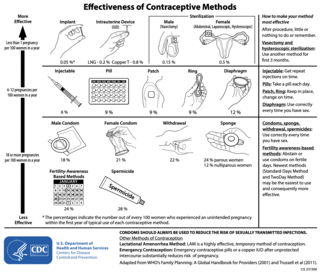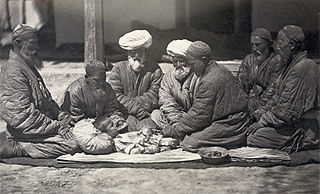Cost-effectiveness analysis (CEA) is a form of economic analysis that compares the relative costs and outcomes (effects) of different courses of action. Cost-effectiveness analysis is distinct from cost–benefit analysis, which assigns a monetary value to the measure of effect. Cost-effectiveness analysis is often used in the field of health services, where it may be inappropriate to monetize health effect. Typically the CEA is expressed in terms of a ratio where the denominator is a gain in health from a measure and the numerator is the cost associated with the health gain. The most commonly used outcome measure is quality-adjusted life years (QALY).
The incremental cost-effectiveness ratio (ICER) is a statistic used in cost-effectiveness analysis to summarise the cost-effectiveness of a health care intervention. It is defined by the difference in cost between two possible interventions, divided by the difference in their effect. It represents the average incremental cost associated with 1 additional unit of the measure of effect. The ICER can be estimated as:
Health economics is a branch of economics concerned with issues related to efficiency, effectiveness, value and behavior in the production and consumption of health and healthcare. In broad terms, health economists study the functioning of healthcare systems and health-affecting behaviors such as smoking.
Efficiency is the ability to avoid wasting materials, energy, efforts, money, and time in doing something or in producing a desired result. In a more general sense, it is the ability to do things well, successfully, and without waste. In more mathematical or scientific terms, it is a measure of the extent to which input is well used for an intended task or function (output). It often specifically comprises the capability of a specific application of effort to produce a specific outcome with a minimum amount or quantity of waste, expense, or unnecessary effort. Efficiency refers to very different inputs and outputs in different fields and industries.

The National Institute for Health and Care Excellence (NICE) is an executive non-departmental public body of the Department of Health in the United Kingdom, which publishes guidelines in four areas:

Vertebral augmentation, which includes vertebroplasty and kyphoplasty, are similar spinal procedures in which bone cement is injected through a small hole in the skin into a fractured vertebra to try to relieve back pain caused by a vertebral compression fractures. It was found not to be effective in treating osteoporosis-related compression fractures of the spine. The people in both the experimental and placebo groups reported improvement in their pain, suggesting that the benefit is related to the placebo effect. Routine use of 2019 is thus not recommended.
The Pharmaceutical Benefits Scheme (PBS) is a program of the Australian Government that provides subsidised prescription drugs to residents of Australia, as well as certain foreign visitors covered by a Reciprocal Health Care Agreement. The PBS seeks to ensure that Australian residents have affordable and reliable access to a wide range of necessary medicines. The PBS has faced increased scrutiny as its cost has increased. The scheme assumes responsibility for the cost of drugs to patients in the community setting rather than while in hospital which is the responsibility of each state and territory. Together with Medicare the PBS is a key component of health care in Australia.

The quality-adjusted life year or quality-adjusted life-year (QALY) is a generic measure of disease burden, including both the quality and the quantity of life lived. It is used in economic evaluation to assess the value for money of medical interventions. One QALY equates to one year in perfect health. If an individual's health is below this maximum, QALYs are accrued at a rate of less than 1 per year. To be dead is associated with 0 QALYs. QALYs can be used to inform personal decisions, to evaluate programs, and to set priorities for future programs.

Tetracaine, also known as amethocaine, is a local anesthetic used to numb the eyes, nose, or throat. It may also be used before starting an intravenous to decrease pain from the procedure. Typically it is applied as a liquid to the area. Onset of effects when used in the eyes is within 30 seconds and last for less than 15 minutes.
Health care prices in the United States describes market and non-market factors that determine pricing, along with possible causes as to why prices are higher than other countries. Compared to other OECD countries, U.S. healthcare costs are one-third higher or more relative to the size of the economy (GDP). According to the CDC, during 2015 health expenditures per-person were nearly $10,000 on average, with total expenditures of $3.2 trillion or 17.8% GDP. Proximate reasons for the differences with other countries include: higher prices for the same services and greater use of healthcare. Higher administrative costs, higher per-capita income, and less government intervention to drive down prices are deeper causes. While the annual inflation rate in healthcare costs has declined in recent decades; it still remains above the rate of economic growth, resulting in a steady increase in healthcare expenditures relative to GDP from 6% in 1970 to nearly 18% in 2015.

There are many different methods of birth control, which vary in what is required of the user, side effects, and effectiveness. It is also important to note that not each type of birth control is ideal for each user. Outlined here are the different types of barrier methods, spermicides, or coitus interruptus that must be used at or before every act of intercourse. Immediate contraception, like physical barriers, include diaphragms, caps, the contraceptive sponge, and female condoms may be placed several hours before intercourse begins. The female condom should be removed immediately after intercourse, and before arising.[1] Some other female barrier methods must be left in place for several hours after sex. Depending on the form of spermicide used, they may be applied several minutes to an hour before intercourse begins. Additionally, the male condom should be applied when the penis is erect so that it is properly applied prior to intercourse.
Eculizumab, sold under the trade name Soliris, is a medication used to treat paroxysmal nocturnal hemoglobinuria (PNH) and atypical hemolytic uremic syndrome (aHUS). In people with PNH, it reduces both the destruction of red blood cells and need for blood transfusion, but does not appear to affect the risk of death. Eculizumab was the first drug approved for each of its uses, and its approval was granted based on small trials. It is given in a clinic by intravenous infusion.
In medicine, an indication is a valid reason to use a certain test, medication, procedure, or surgery. There can be multiple indications to use a procedure or medication. An indication can commonly be confused with the term diagnosis. A diagnosis is a particular [medical] condition while an indication is a reason for use. The opposite of an indication is a contraindication, a reason to withhold a certain medical treatment because the risks of treatment clearly outweigh the benefits.

Male circumcision is the removal of the foreskin from the human penis. In the most common procedure, the foreskin is opened, adhesions are removed, and the foreskin is separated from the glans. After that, a circumcision device may be placed and then the foreskin is cut off. Topical or locally injected anesthesia is sometimes used to reduce pain and physiologic stress. For adults and children, general anesthesia is an option, and the procedure may be performed without a specialized circumcision device. The procedure is most often an elective surgery performed on babies and children for religious or cultural reasons. In other cases it may be done as a treatment for certain medical conditions or for preventative reasons. Medically it is a treatment option for problematic cases of phimosis, balanoposthitis that does not resolve with other treatments, and chronic urinary tract infections (UTIs). It is contraindicated in cases of certain genital structure abnormalities or poor general health.
Dental tourism is a subset of the sector known as medical tourism. It involves individuals seeking dental care outside their local healthcare systems and may be accompanied by a vacation. Dental tourism is growing worldwide; as the world becomes ever more interdependent and competitive, technique, material, and technological advances spread rapidly, allowing providers in developing countries to provide dental care at significant cost savings when compared to their peers in the developed world.
In the United States, a high-deductible health plan (HDHP) is a health insurance plan with lower premiums and higher deductibles than a traditional health plan. Being covered by an HDHP is also a requirement for having a health savings account. Some HDHP plans also offer additional "wellness" benefits, provided before a deductible is paid. High-deductible health plans are a form of catastrophic coverage, intended to cover for catastrophic illnesses. Adoption rates of HDHPs have been growing since their inception in 2004, not only with increasing employer options, but also increasing government options. As of 2016, HDHPs represented 29% of the total covered workers in the United States; however, the impact of such benefit design is not widely understood.
Healthcare rationing in the United States exists in various forms. Access to private health insurance is rationed on price and ability to pay. Those unable to afford a health insurance policy are unable to acquire a private plan except by employer-provided and other job-attached coverage, and insurance companies sometimes pre-screen applicants for pre-existing medical conditions. Applicants with such conditions may be declined cover or pay higher premuums and/or have extra conditions imposed such as a waiting period.
Health care rationing refers to mechanisms that are used to allocate health care resources.
Autologous conditioned serum, also known as Orthokine and Regenokine, is an experimental procedure in which a person's own blood is extracted, manipulated, and then reintroduced with claims benefit in osteoarthritis. There is limited evidence on safety and effectiveness as of 2017. It is not included in medical guidelines as of 2017. It is a type of autologous blood therapy.

Mahatma Jyotiba Phule Jan Arogya Yojana, previously Rajiv Gandhi Jeevandayee Arogya Yojana (RGJAY), is a Universal health care scheme run by the Government of Maharashtra for the poor people of the state of Maharashtra who holds one of the 4 cards issued by the government; Antyodaya card, Annapurna card, yellow ration card or orange ration card. The scheme was first launched in 8 districts of the Maharashtra state in July 2012 and then across all 35 districts of the state in November 2013. It provides free access to medical care in government empanelled 488 hospitals for 971 types of diseases, surgeries and therapies costing up to Rs.1,50,000 per year per family. As of 17 January 2016, around 11.81 lakh procedures amounting to Rs.1827 crore have been performed on patients from 7.13 lakh beneficiary families which includes over 7.27 lakh surgeries and therapies. The scheme is called successful amid some allegations of hospitals directly or indirectly causing patients to incur out-of-pockets expenses on some part of the treatment.







